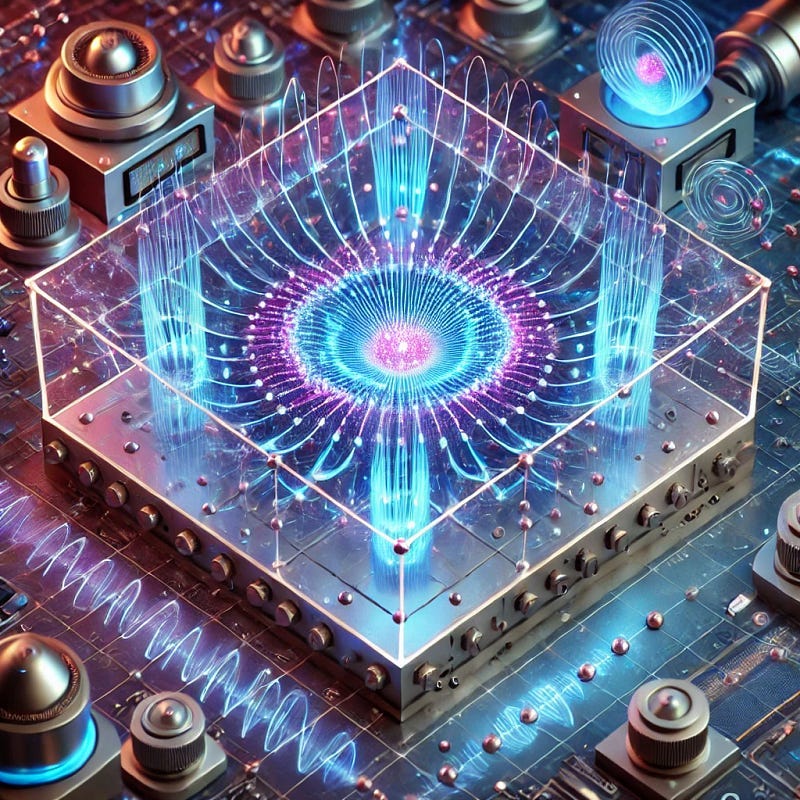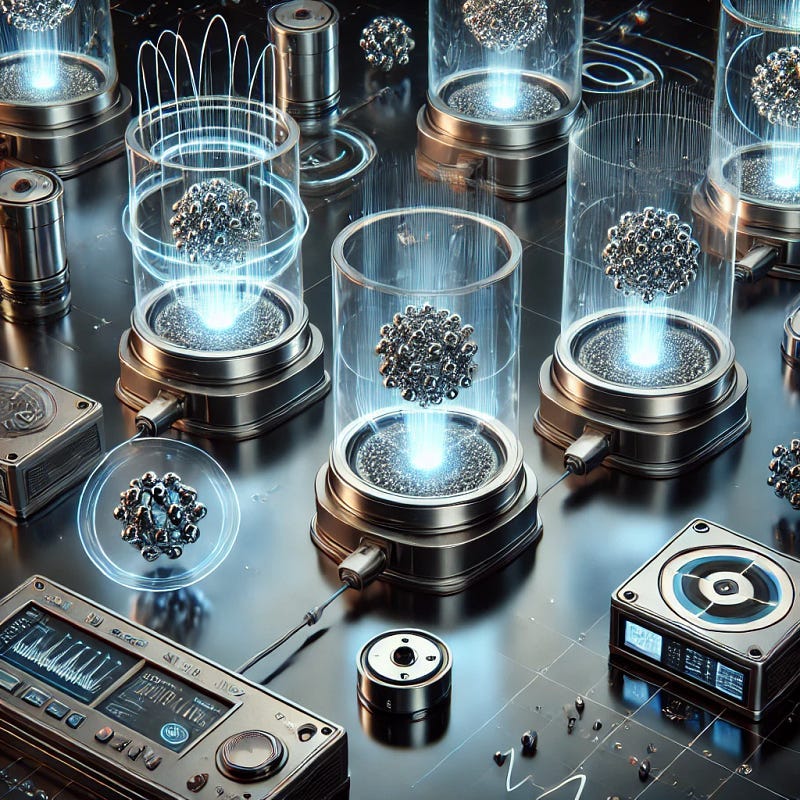Magnetic Entanglement Containers: Bridging Quantum Coherence, Consciousness, and Advanced Technology
Unlocking the Power of Magnetism
Exploring innovative environments designed to capture and utilize magnetic entanglement for breakthroughs in quantum computing, cognitive enhancement, and AI adaptability.

The concept of “Magnetic Entanglement Containers” could represent specially designed environments or devices engineered to facilitate and capture the phenomenon of magnetic entanglement. Here’s an exploration of how such containers might be conceptualized, particularly within the realms of quantum mechanics, information storage, and consciousness studies.
1. Quantum Magnetic Entanglement Containers
Purpose: At the quantum level, magnetic entanglement containers could serve as environments that encourage magnetic particles or fields to become entangled, potentially enhancing quantum coherence and stability.
Design: These containers would need to be made of materials capable of isolating or amplifying specific magnetic fields. Advanced shielding would be essential to maintain the delicate magnetic interactions without interference.
Applications: Such containers could be groundbreaking for quantum computing and secure information transfer. By preserving entangled states, they could lead to more resilient quantum memory storage or advanced quantum communication systems.
2. Consciousness-Driven Magnetic Containers
Purpose: In speculative research, containers designed to interface magnetic fields with cognitive states might be utilized to explore magnetic influences on consciousness. They could serve as “resonance chambers” where magnetic frequencies are tuned to affect specific neural states or cognitive patterns.
Design: These containers might use bio-compatible magnetic fields that interface with neural oscillations, amplifying or dampening certain brain wave frequencies to explore consciousness’s magnetic dimension. The container would likely feature adjustable magnetic fields and internal sensors for real-time adjustments.
Applications: Potential uses could include enhanced meditation, therapeutic states for mental health treatment, or even training environments for focused cognitive states, leveraging magnetic fields to modulate neural processes.
3. AI-Integrated Magnetic Field Containers
Purpose: For AI and machine learning systems, magnetic entanglement containers could enhance real-time adaptability by storing complex data configurations and establishing an interface between biological and digital magnetic interactions.
Design: The design could incorporate magnetoelectric components, such as magnetoelectric memristors, which facilitate low-energy data storage and adaptability. These containers would use entangled magnetic fields to create layered memory states, much like a brain’s neural network.
Applications: These containers could accelerate the development of AI systems capable of “learning” and processing data more organically, enabling machines to intuitively access and store complex patterns similar to biological systems.
4. Space-Time Magnetic Field Containers
Purpose: For more theoretical applications, magnetic entanglement containers that interact with space-time could explore the relationship between magnetic fields, gravity, and quantum coherence. These containers could enable experiments on how magnetic fields influence spacetime structure.
Design: These containers would need advanced magnetic field generators and stabilizers to simulate high-intensity or modified gravitational conditions. The materials would also require high durability to sustain strong magnetic fields over time.
Applications: Such containers might be used in research exploring gravitational wave influences, possible wormhole stabilizations, or other high-energy phenomena to understand magnetic fields’ potential impact on space-time.
Magnetic Entanglement Containers offer a versatile and revolutionary framework for investigating how magnetic fields intersect with quantum coherence, consciousness, AI, and potentially space-time itself. Whether used to preserve quantum states, modulate cognitive frequencies, enhance AI adaptability, or even test space-time theories, these containers embody the intersection of theoretical and practical innovation.
Their development could open doors to new technologies and deepen our understanding of reality, offering unprecedented insight into the role of magnetism as a foundational force linking mind, machine, and matter.

Magnetic Entanglement Encapsulation and Containers
This emerging idea ties into the unique properties of quantum dots and their ability to operate at quantum scales:
1. Quantum Encapsulation in Magnetic Fields
Magnetic Encapsulation leverages magnetic fields to maintain stable quantum states, specifically within tiny containers, such as quantum dots. By applying precise magnetic fields, these containers aim to preserve entangled states, which can otherwise be disrupted by external influences.
Quantum Coherence Preservation: Quantum dots, as small, confined systems, allow for entanglement but are prone to decoherence. Encapsulation via magnetic fields minimizes interference, creating a controlled environment for more stable quantum interactions.
2. Applications with Quantum Dots
Controlled Magnetic Entanglement: Quantum dots, often used in quantum computing and nanotechnology, can interact under controlled magnetic fields to form entangled pairs. This is essential in quantum communication, where stable entanglement enables secure information transfer.
Efficient Quantum Data Processing: Magnetic containers with quantum dots may enable data to be processed and transferred at unprecedented speeds by utilizing quantum entanglement’s non-local properties, making it vital for future quantum computing systems.
3. Precision in Measurement and Control
Technology for Precision Control: High precision is required when manipulating quantum dots and their entangled states. Small inaccuracies in magnetic field strength or placement disrupt the delicate entanglement. Cutting-edge instruments and containment structures are essential to measure and maintain these states accurately.
Feedback and Stabilization: Magnetic fields can provide feedback loops to stabilize entangled states, where feedback sensors within containers dynamically adjust magnetic field parameters to ensure the consistency of the quantum state.
4. Future Potential
Quantum Memory Systems: Encapsulated magnetic entanglement could serve as a foundation for quantum memory, where data is stored in entangled states within these containers.
Applications in Teleportation and Secure Communication: Magnetic containers could one day enable near-instantaneous, secure data teleportation over vast distances.
By mastering magnetic entanglement encapsulation with quantum dots, researchers aim to create a stable, versatile quantum framework that may pave the way for breakthroughs in computation, data storage, and secure communication systems.

